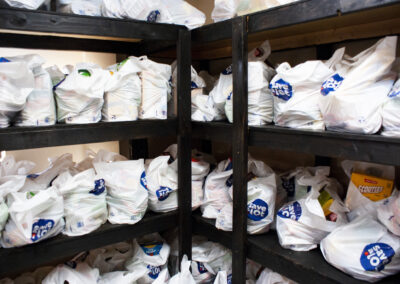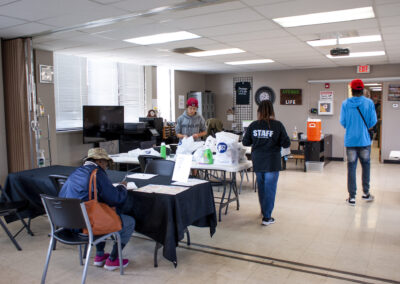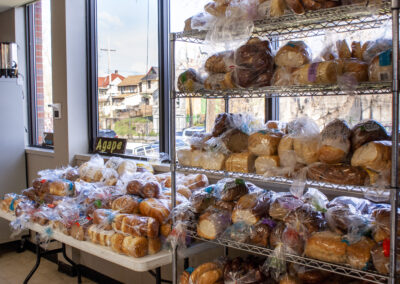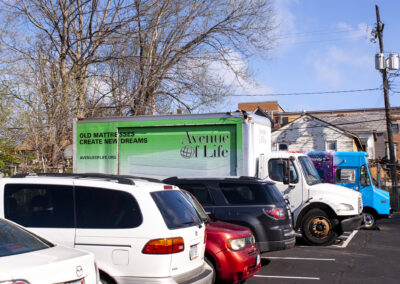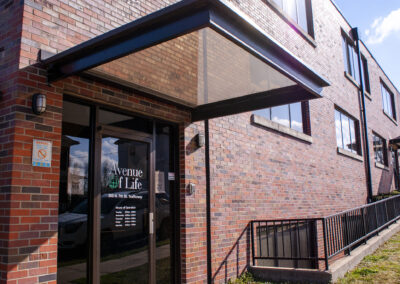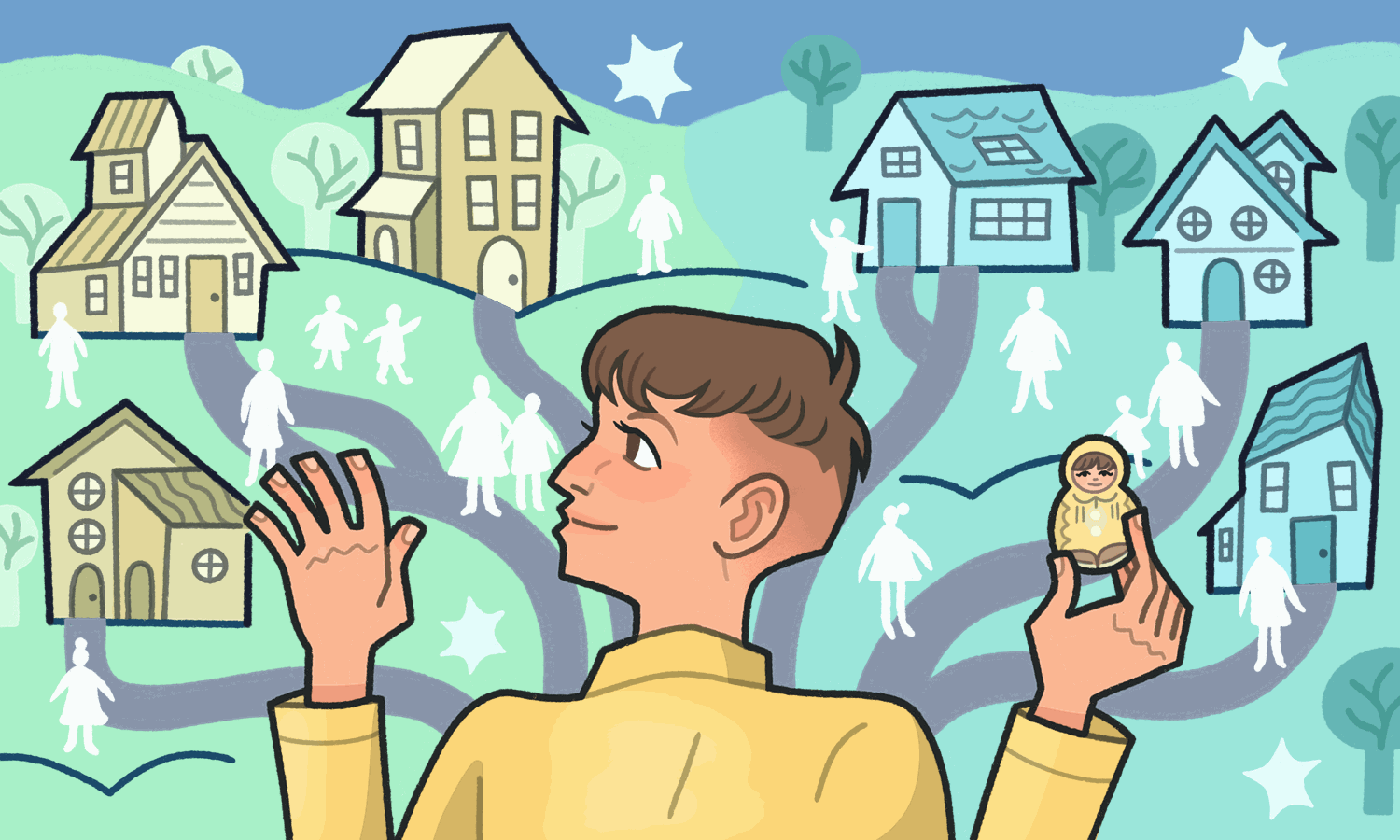
LAUREN IBAÑEZ / NEXTGENRADIO
What is the meaning of
home?
Zoë Shriner speaks with Anna McCune, a Russian-American who was adopted from St. Petersburg at the age of 5. Her difficult experiences while living in an orphanage taught her the importance of having a sense of belonging. The love her adoptive family showed her brought her through the difficult transition to the United States, and instilled a passion for showing others that same kind of love.
From adoptee to community builder: Why this Russian-American says home is not complete without belonging
Listen to the Story
Click here for audio transcript
(Sound of Russian Doll)
This is a Russian doll. And so it’s a stacking doll where each time you go, it just gets smaller and smaller and smaller. This one has like 17 different pieces
(Sound of Russian Doll)
Hi, I’m Anna McCune and I’m the KCPS Empowerment Director at Avenue of Life.
I was adopted from Russia when I was 5 and, my first five years, I lived in an orphanage.
So I have a Russian doll that is from Russia that when my parents adopted me, they bought. Um, so it’s pretty special to me.
It’s important for me to connect with my heritage because it’s who I am. It’s a part of me.
To me home means having a safe place where you have individuals around you who love you and in a community that you feel seen and feel valued in and respected in.
No matter what someone’s culture, religion, race, sexual orientation, gender identity, I want anyone and everyone to feel like you have a community. That’s something that Avenue of Life, I feel like, embodies, is that anyone is welcome, anyone and everyone. And this is Avenue of Life’s kitchen, where we are currently making a meal for later on today with our families.
(Sound of Kitchen)
This is the space that we used to have all of our family meals on Wednesdays and Saturdays. So again, we have a couple hundred people come through.
(Buzz of fridge)
And then this is our, uh, food room. Where we make all the food packs for families.
Let’s say they have dietary needs, we try and make it as inclusive as possible that we can pick out certain foods for them. I had a lot of skin allergies when I grew up. So in Russia, what they did to try and kind of take care of that is I had one meal. So I ate one meal for five years.
(Keys jangling and door unlocking)
This closet, this is our clothing closet. So families and community people can come up, get clothing if they need it.
In the orphanage where I grew up, like, the shoes I had to wear were several sizes too small. The clothes that you wore were too small. They were dirty.
(Footsteps)
Um, you know, when I came over, I had never used crayons. I hadn’t played with toys. It was tough. You know, in kindergarten, they’re pretty big with you sharing. And since that was the first year I ever had anything, I didn’t want to share anything.
But that first year I had a community and I had a family that really loved me. So I made a lot of progress.
We want to help families have that emotional support so that we can help them move through those barriers and obstacles they’re facing until they’re housed.
We see that with Collective Impact.
We have a lot of partners, but we want the entire community invested in this so that you can really see results and really continue to work to decrease the amount of student homelessness.
We try and hold different events that are free for families, so they can come and have fun, and be building that community for each other.
At Avenue of Life, I’ve been able to learn how across different cultures and religions what home means to other people, and it doesn’t necessarily match even what my home vision is.
Growing up I always, I know what that feeling feels like to not have a family or to not have a home, and so I want people to feel like they have a family wherever that’s going to be and whoever that’s going to entail.
I have two 1-year-olds, uh, and I’m married to my wife, and we have two dogs, and I think at the end of the day, I go home and I just pour into them. And that definitely gets me going for the next day.
On Wednesdays and Saturdays, Avenue of Life’s hallways and meeting rooms become more active than usual. Filled with staff, volunteers, partnering organizations, and families, everyone is working toward the same goal—keep Kansas City’s kids off the street.
In one room, a visitor explained their recent eviction in hushed tones. In another large community room, parents and children moved between tables to learn about the various services that are available to them.
There was no clear difference between the volunteers and visitors.
“I think a lot of people have an idea of what a homeless person should look like, or what behaviors you might see,” said Anna McCune, the Kansas City Public Schools Empowerment Director at Avenue.
“Homelessness and houselessness can happen to anyone,” she said. “It’s not just someone who isn’t clean, or hasn’t showered, or someone who’s really angry. The presentation really depends on that person and maybe how long they’ve been fighting this.”

Anna McCune sits in a chapel holding the memory board her sister made for her. 28 years ago she came home. Now, she works to do the same for Kansas City’s unhoused families. Monday, April 1, 2024.
ZOË SHRINER / NEXTGENRADIO
Serving nearly 29,000 hot meals, providing housing for 109 families, distributing clothing to almost 7,000 people, and processing over $675,000 worth of donations in 2023 alone, Avenue’s reach is expansive.
With local advocacy organizations estimating that “1,798 people are homeless on any given night in Kansas City,” there is a considerable need not just for shelter but for a community that will wrap its arms around the people experiencing the isolation and trauma of homelessness.
Anna knows these feelings all too well.
She was born on May 6, 1992, in St. Petersburg, Russia, and was taken to an orphanage shortly after, where the children slept in cribs well past the age of 5.
“I think growing up in the 90s in an orphanage isn’t the best. There was a lot of need … there was just a lot going on in that time in Russia,” she said.
Her shoes were always several sizes too small and her clothes were dirty.
“So I think they did the best they could, but it was not a great upbringing for anyone,” Anna said.

Several relics from Anna McCune’s adoption are laid on a table. A doll from her grandmother, the shoes she was adopted in, and a set of hand-painted Russian nesting dolls remind Anna McCune of her heritage.
ZOË SHRINER / NEXTGENRADIO
“It’s extremely difficult for any human to live through eviction or homelessness,” Anna said. “It’s really hard to be level-headed and to regulate your emotions, and so that’s a big piece of what we want to help families do.”

Anna McCune holds the memory board her sister made for her after she was adopted. It includes her birth certificate in both Russian and English, a map of where her parents flew on their way to pick her up from Russia, and a photo from adoption day.
ZOË SHRINER / NEXTGENRADIO
In 1996, at the age of 5, Anna was adopted into a loving American family, but life was still hard.
She described the transition to her American life, complete with an abundance of toys, crayons, fresh clothes, and the English language, as “tough.” She “cried … for hours” trying to puzzle through Dr. Seuss rhymes and was initially fearful of her mother, whom she associated with the orphanage’s female staff.
“It was a challenge,” Anna said, “but … that first year I had a community and I had a family that really loved me. So I made a lot of progress. Whereas if I had a different upbringing, I think it would have been a lot more challenging.”

The Self-Sufficiency Standard defines the amount of income necessary to meet basic needs without public subsidies and without private/informal assistance. This chart is also called the Arizona Matrix Model and Avenue of Life uses it to asses their clients’ needs.
Now, as the mother of 1-year-old twins with a wife and two dogs, Anna “pours into them” to fuel her work at Avenue, which involves helping families move from shelters, their cars, or the streets into homes they can pay for and take ownership of.
Avenue’s rehousing process starts with an early emphasis on relationship building and meeting families where they’re at.
The families are referred to Avenue navigators through school district liaisons and within 24 hours, Avenue sets up an appointment to bring them in. Although it takes time to get families into a permanent housing situation, they are put up in hotels, and their other immediate needs are taken care of in the meantime.
Oftentimes, families come into their first several meetings with Avenue feeling overwhelmed.
“I tell families, like, ‘This is a relationship, and in a lot of relationships, I’m not necessarily gonna just like spill everything,” Anna explained. “‘I wanna get to know who you are, but that does not have to come in this first meeting.’”
As soon as they’re ready to commit to the program, families are given the financial assistance they need to get into stable housing.
“We ensure that we’re setting our families up for success,” Anna said.
But that doesn’t always mean there will be success. Transportation when the bus lines between Kansas and Missouri don’t always overlap, mental health and emotional regulation when navigating the turmoil of eviction and homelessness, and language barriers are just some of the additional issues that families may face.
“It’s extremely difficult for any human to live through eviction or homelessness,” Anna said. “It’s really hard to be level-headed and to regulate your emotions, and so that’s a big piece of what we want to help families do.”
Dozens of bags stuffed full of food line the multi-tiered shelves in Avenue of Life’s food closet on Wednesday, April 3, 2024.
Volunteers and visitors move about the various stations to fill out forms, fill and deliver bags of food, and get ready for the community meal that will be served at lunchtime on Wednesday, April 3, 2024.
Overflowing from a table and utility shelf pushed up against the wall of the community room, dozens of bags of bagels, buns, and loaves wait to be taken home as a part of Avenue of Life’s food pantry initiative on Wednesday, April 3, 2024.
Awaiting its next pickup and delivery, Avenue of Life’s furniture truck sits in the parking lot on Wednesday, April 3, 2024. In a ten-year period, Avenue of Life recovered and recycled over 650,000 mattresses from the Kansas City area.
ZOË SHRINER / NEXTGENRADIO
As rewarding as the program is to participate in and complete, Anna says it requires change and commitment.
“The hardest part of my job is knowing that every case isn’t always going to be successful and it’s not always going to transpire the way that you want it to,” Anna explained. “So just being patient and being there for when the family’s ready.”
No matter the situation and no matter a person’s story, Avenue isn’t about quick solutions, it’s about lifelong stability and connection.
“Anyone and everyone is welcome,” Anna said. “Just taking that where it’s at and knowing that when we get your basic needs met and when we are able to get you housed, that’s when the real relationship begins.”

